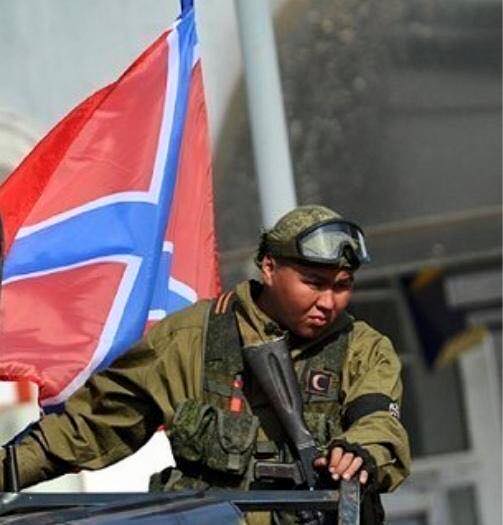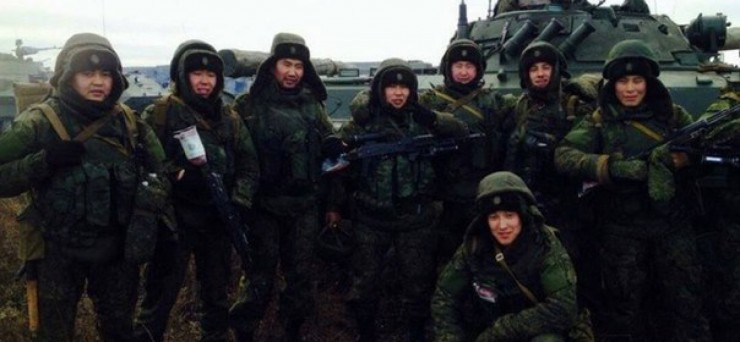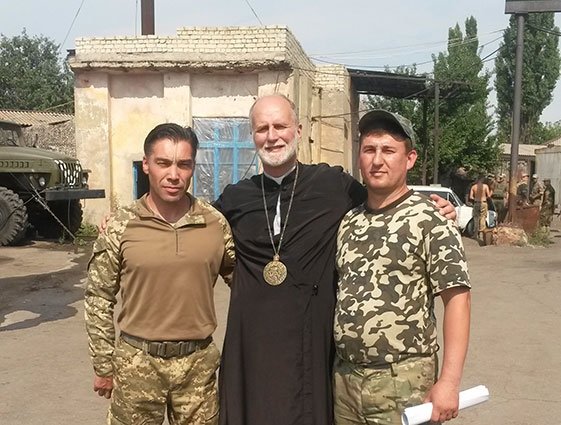The appearance of non-Russian fighters in the Russian “militias” in the Donbas is not a curiosity but rather a conscious Moscow policy to prevent any possibility of fraternization between ethnic Russians and Ukrainians, something that if it happened could undermine Moscow’s goals there, according to Andrey Okara.
Many journalists and commentators have treated sightings of Buryats, Chechens, or other non-Russians on the Russian side of the lines as a curiosity or even source of amusement, but in fact, the Russian analyst says, the dispatch and use of non-Russians in Ukraine is very much part of the Kremlin’s policy.

Kremlin political technologists and “the theoreticians of hybrid war from the General Staff and Ministry of Defense of the Russian Federation have come up with a very correct (from the point of view of the interests of the Kremlin) step.” They have worked to ensure that on the frontlines of the fighting, those on Moscow’s side are not ethnic Russians.
Instead, he continues, “on the side of the Russian world, fight not ethnic Slavs but non-Slavs – Chechens, Buryats, even Yakuts, Daghestanis and Ingush.”
Why is this happening? “Because,” Okara writes, “ethnic Russians, even the most pro-Putin and most committed vatniks … in an extreme situation always find a common language and point of contact with Ukrainians.” That doesn’t happen with Buryats and Chechens, on the one hand, and Ukrainians, on the other.
According to Okara, “there are many occasions when Russian ‘volunteers’ phone Ukrainian ‘fighters’ and say: well, guys, you’d best get away from here, we will be firing on you there.’ Such situations are not rare in the opposite direction as well,” the Russian commentator says. But again this doesn’t happen with non-Slavs.

He concludes his articles by saying that in this way “the Russian world has donned the mask of the Horde. Or perhaps alternatively,” it was always a horde but until now operating as the Russian world? Or even, “the Russian world is a slightly modified and externally Slavicized Horde?”
In the end, then, Okara too treats this as more an occasion for levity than as something serious. But there are three reasons for thinking that to the extent his analysis of Russian intentions in using non-Slavic soldiers is correct, this is likely to be a very serious development indeed.
First, and most immediately, it suggests real command and control problems in the “LNR” and “DNR” forces, that junior officers and men and possibly more senior ones as well are acting on the basis of the oft-expressed view that the Ukrainians they are fighting are not a separate nation but members of the same people as themselves.
If the ethnic Russian militants are acting in that way, this could make it more–not less–difficult for the Donbas regimes to advance and make it more not less probable that Moscow will ultimately have to intervene even more massively with regular troops if it wants to push Ukrainian forces back.
Second, it means that the Kremlin has some real doubts about the loyalty of precisely the ethnic group in whose name it claims to act, the ethnic Russians. If it feels compelled to use non-Russians as a kind of modern Janissary force, such a policy will infuriate some Russians – and especially military commanders — even as it may lead non-Russians to make demands.
And third, over time, any fraternization between Russian fighters and Ukrainian forces could lead to the spread of ideas of the Ukrainian revolution first to these fighters and then back into Russia itself when these fighters return home, perhaps the Kremlin’s worst nightmare of all in the current situation.








